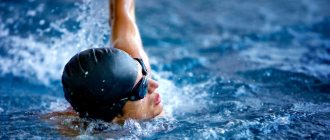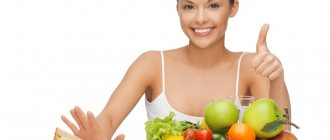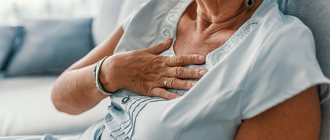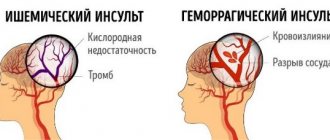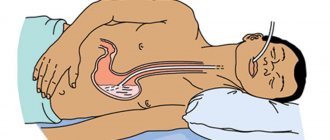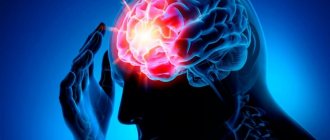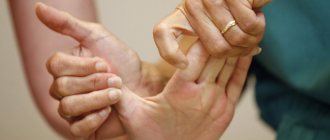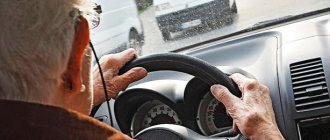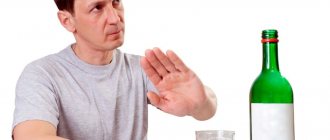A stroke is an acute disturbance of blood circulation in the brain and, as a consequence, its focal damage. It entails irreversible consequences for the body; it can disrupt clarity of consciousness, the functioning of internal organs, cause paralysis, and more. To restore the body, as well as for effective rehabilitation, the patient needs to change the usual approach to household things, observe a special regime, and follow certain nutritional rules after a stroke. Often this all becomes the responsibility of family and friends.
How to eat healthy after a stroke
With the help of a balanced diet, the body is better enriched with necessary substances, and the functioning of all organs improves.
- Meals must be divided into fractions. It is recommended to eat up to six times a day after a stroke.
- At your last meal of the day, you should not overeat. It is not recommended to eat food later than three hours before bedtime.
- If you have extra pounds, then you need to get rid of them with the help of a diet. The body weight of a certain person always depends on his age and height.
- The diet must have an optimal composition, and fats, proteins and carbohydrates must be consumed in the right ratio.
A balanced diet suitable for a particular patient should only be recommended by his attending physician!
In case of a stroke, a person must be hospitalized. Relatives are often interested in the question: how many people are in the hospital with a stroke in intensive care and in the general ward?
If you are interested in how stroke care is provided in a hospital setting, read the next topic.
A balanced diet after a stroke is the key to his health. All dishes must be steamed, boiled, or sometimes baked.
Thus, we can conclude that these restrictions are not too strict and will not cause any problems in cooking.
Recipes
When choosing recipes for compiling a patient’s menu, it is necessary to proceed not only from usefulness. It is very important that the food is varied and tasty.
First meal
To prepare chicken soup:
- It is necessary to cook broth from the breast.
- Grind the finished chicken.
- Chop the carrots and onions and lightly fry in vegetable oil.
- Add wholemeal noodles to the broth and cook until tender.
- Add vegetables to the finished soup and simmer for another 3 minutes.
- Add finely chopped greens.
Second courses
To prepare millet porridge with prunes, you need:
- Take 100 g of prunes, rinse, add 300 ml of water and boil for 5 minutes. Then cool, remove the seeds and chop.
- Pour 200 g of millet into 400 ml of water and cook until the liquid boils away.
- Place prunes on the porridge, place the pan in the oven and bake at 180°C for 10 minutes.
To prepare baked flounder:
- Clean the fish, wash, dry, grease the inside with lemon juice and leave to marinate for an hour.
- Wrap the fish in greased foil and bake in the oven for 40 minutes.
- Place the fish on a plate and sprinkle with lemon juice.
What can be given after NMC and what cannot be given
The diet of bedridden patients after a stroke can be of two types in the first days after a stroke:
- menu for patients who swallow normally;
- diet (nutrition) of patients after a stroke with swallowing disorders (nutrition for dysphagia)
If a person is conscious and SWALLOWS FOOD NORMALLY, there are no special dietary restrictions.
In the first days after returning home and in the next month, I would recommend giving everything in pureed form - puree, minced meat, broth, jelly.
The main thing we care about:
- Treatment after a stroke with folk remedies
- prevention of food aspiration and aspiration pneumonia;
- prevention of constipation
Nutrition to prevent aspiration:
- First, it is advisable to feed the patient SITTING, or with the head of the bed raised by 45% (two pillows under the head), slightly turned to the side. If the patient can talk, then you need to ask which side is easier for him to swallow food on.
- The second absolute requirement: DO NOT give anything that crumbles. INCLUDING PROHIBITED BREAD, SOOOKED CRUSKS, crumbly porridges, pasta!
- DO NOT tempt fate - do not give fish (bones), berries with seeds, seeds, nuts!
Diet to prevent constipation comes down to:
- Limiting all flour products should be limited to semolina porridge, rice porridge, pancakes, cakes, etc.
- meat is necessary, but no more than one small portion per day, it is better to give liver
Proper nutrition to prevent constipation is
- vegetable purees, zucchini, peas, pumpkin, potatoes (not the best choice), etc. Mashed potatoes less often. Grated or very finely chopped salads from fresh cucumber, tomato, bell pepper, etc. are very healthy.
- Fruit jelly, juices, puree: puree - dried fruit jelly, fresh fruit - prunes, plums, kiwi, apples, bananas, watermelon should be given daily. Berries with small seeds - grapes, figs, raspberries NOT allowed!
- the liquid is given in small sips, from a spoon or from a syringe: compote with caution. Water is absolutely essential! If a person swallows on his own, he should be given up to 1.5 liters of water per day to drink. It is more convenient to drink through a syringe. I use a 5-10 ml syringe.
- Fermented milk products - fermented baked milk, cottage cheese, kefir, soft cheese - daily, but without fanaticism. Prolonged feeding of only dairy products leads to anemia and acidosis.
Important!
If medications are prescribed that reduce blood clotting and prevent the formation of blood clots (anticoagulants, antiplatelet agents), then nutrition after an ischemic stroke requires a special approach!
Products that affect blood viscosity should be avoided . A list of foods that increase or decrease blood viscosity can be found in the article on nutrition while taking warfarin.
If you feed correctly, the patient will have good tests.
Once a month, it is advisable to do laboratory tests (at a minimum: complete blood count, analysis of electrolytes, urea, uric acid, creatinine).
If the tests are good, then you are doing everything right! And if the tests are “not very good,” then you need to consult a doctor.
Menu
A sample menu for three days might look like this:
Monday
Breakfast – cottage cheese casserole, weak and unsweetened tea.
Second breakfast – apple, biscuits.
Lunch – vegetable soup, a piece of rye bread.
Afternoon snack – biscuits, fruit or berry decoction.
Dinner – vegetable puree, steamed fish, vegetable juice (tomato).
At night - kefir.
Tuesday
Breakfast - an omelet of 2-3 egg whites, weak and unsweetened tea.
Second breakfast – low-fat cottage cheese with berries.
Lunch – vegetable puree soup, steamed chicken cutlet, cabbage salad, rosehip infusion.
Afternoon snack – low-fat yogurt.
Dinner – steamed mackerel fillet, boiled black rice, dried fruit compote.
At night - kefir.
Wednesday
Breakfast - oatmeal porridge with low-fat milk, bran bread, tea.
Second breakfast – low-fat yogurt.
Lunch – fish soup, buckwheat porridge, fruit juice.
Afternoon snack – fruit salad.
Dinner – pumpkin casserole, berry juice.
At night - kefir.
Feeding a patient after a stroke with impaired swallowing
It is much more difficult to feed a patient with impaired swallowing. Very often such patients stop eating altogether! And this is a problem!
If a patient has DYSPHAGIA - a swallowing disorder, then he can be fed through a tube (as they feed in the hospital), through a puncture gastrostomy tube (we very rarely use this method) and, finally, can be fed with a spoon.
- Diet for rheumatoid arthritis - allowed and prohibited foods, recipes with photos
Spoon feeding, on the one hand, requires enormous patience on the part of the patient and the caregiver, on the other hand, it is a wonderful opportunity to communicate with the patient and express all your love and gratitude to him.
The basis of proper nutrition for a stroke patient with dysphagia (impaired swallowing) is the use of FOOD THICKENERS! Very often, a swallowing disorder develops in which a person swallows thick food better than liquid food (paradoxical dysphagia).
In the first month after a stroke, ONLY creamy foods should be given (through a tube or from a spoon).
25-30% sour cream or 4% fermented baked milk is best suited for this diet. Of course, you can also use baby food.
BUT! Before giving baby food, make sure that the mixture does not irritate the throat. Many baby foods tickle the throat and are difficult to swallow and can cause choking and coughing.
The daily menu after a stroke is dictated by the patient’s CAPABILITIES. It’s good if your ward eats 1 liter per day, but even if he eats only a few spoons of food, that’s great! The lack of food can be compensated for by subcutaneous infusions of 5% glucose or saline. Watch the video on how to prevent dehydration after a stroke.
You should not chase food that is too high in calories - the daily kcal requirement for a person who is bedridden (paralyzed) after a stroke is limited - approximately 700-800 kcal/day.
Prohibited Products
Advertising:
Stroke patients or people caring for them should understand that not all foods are allowed to be eaten during rehabilitation. If you ignore such recommendations from doctors, the result of your daily work will be nullified. Among the prohibited products, the following should be noted:
- semi-finished products (sausage, pies, casseroles);
- prepared using fats of animal origin (lard, butter, margarine, fat tail);
- dairy products with a high proportion of fat (sour cream, yogurt, fermented baked milk, cottage cheese, certain types of cheeses);
- which contain large amounts of cholesterol, trans fats, palm and coconut oils;
- sweet, salty, pickled and spicy dishes (all spices, homemade pickles, jams, ketchup, mayonnaise).
All fried foods are prohibited. Now you have to forget about scrambled eggs in the morning and fried potatoes for dinner. It is also better to give up baking for a while.
Prohibited drinks
Any type of alcoholic beverages is prohibited during the recovery period after a stroke. Many people believe in the theory that good quality dry red wine helps cope with the effects of a stroke. In reality this is a myth.
One glass of wine can prevent the occurrence of apoplexy. Alcohol has a positive effect on the walls of blood vessels and the condition of the blood. However, after a stroke, especially in the first few weeks, even one glass of wine can cause irreparable harm to the body.
Advertising:
Also prohibited are strong tea and coffee, and all types of energy drinks. Their use increases blood pressure. In addition, it is often a provoking factor for a recurrent attack.
Six General Principles of Rehabilitation
Main tips and rules for the recovery period:
- Early start. Start rehabilitation from the first days of hospital stay and continue at home until lost functions are restored.
- Systematicity - constantly and regularly carry out a set of restoration measures. Hard work on yourself and the desire to get better are the keys to effective rehabilitation.
- Sequence - each stage of recovery is intended for a specific category of patients (for severe strokes, start rehabilitation from the first stage, for milder ones - from one of the subsequent ones). It is important to move step by step and in a timely manner to a new stage (after achieving your goals).
- Multidirectionality - restore all lost functions (movement, speech, memory) in parallel, simultaneously within the framework of the rehabilitation stage.
- Use rehabilitation equipment: cane, walker, wheelchair, crutches.
Means of rehabilitation after a stroke.
Supervision by a specialist. No matter how correct rehabilitation at home is, patients after a stroke must be observed by a neurologist and work with a rehabilitation specialist. These specialists will help you choose the right set of rehabilitation measures and monitor their effectiveness.
- Exercises after a stroke at home for recovery
Vitamins
To speed up the recovery of vital functions, the patient requires vitamins:
- "Retinol" (vitamin "A"), involved in the synthesis of taurine, necessary to prevent nervous excitement.
- B vitamins that normalize digestion, blood circulation and restore neurons.
- “Ascorbic acid” also helps normalize blood pressure and restore vascular elasticity.
- “Tocopherol” (vitamin “E”), which improves the flow of oxygen to the brain.
- Vitamin “P”, necessary for the regeneration of nerve tissue.
Healthy ready meals
Advertising:
As a first course, the Table No. 10 diet recommends various soups made with water or vegetable broth. They can be seasoned with cereals and chopped vegetables. You can add greens.
>
Among protein dishes, preference should be given to sea fish and lean meats (turkey, rabbit, chicken). Seafood is also allowed. To remove excess fat from meat, it must first be boiled and only then used for culinary purposes. Meat and fish are baked in the oven and made into steam cutlets.
The diet of a modern person is almost impossible to imagine without bread. Diet “Table No. 10” allows gray and black options, with bran. The so-called yesterday's wheat bread will be useful. You can serve biscuits and crackers with tea.
In the absence of a pronounced allergy to casein and dairy products, the latter can be introduced into the diet, but with a mass fraction of fat content of no more than 1.5%. It can be kefir, cottage cheese or regular milk. It is better to avoid salty cheeses.
Almost all vegetables and fruits are allowed for consumption. It is better to eat them steamed, and raw - in exceptional cases. The diet can be varied with various cereals with the exception of semolina. They are used to prepare porridges, puddings and casseroles.
For drinks, preference should be given to herbal infusions, juices and berry fruit drinks. You can drink weak green tea, as well as cocktails based on low-fat milk. As for sweets, the Table No. 10 diet allows honey, dried fruits and soy candies. Chocolate, pastries and biscuits are prohibited.
Diet according to Pevzner
In 1923, the Institute of Nutrition was created in the USSR. One of its leaders was M.I. Pevzner. His developments in nutrition even today have a high therapeutic potential. Moreover, the nutritional system he developed, also known as “Table No. 10,” is used to treat post-stroke patients. It pursues several goals at once:
- normalization of blood pressure indicators;
- restoration of the vascular system;
- preventing the formation of blood clots;
- decrease in blood viscosity.
The daily calorie intake is 1900-2500 kcal. In this case, all products must be boiled or baked in the oven. It is possible to cook them on the grill. Ready-made meals can be eaten hot or cold. Among the main features of the Pevzner diet, it is necessary to highlight the complete absence of animal fats and salt-free recipes. In addition, meals should be fractional and in small portions.
You are allowed to consume no more than 450 g of complex carbohydrates per day. Proteins should account for up to 60% of the total diet, and the amount of healthy fats should not exceed 70 g. Salting dishes is allowed only in the post-acute period.
